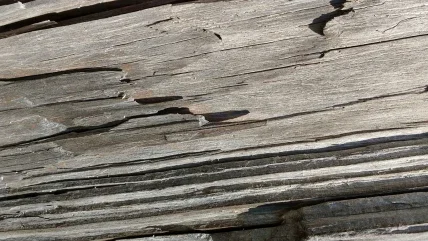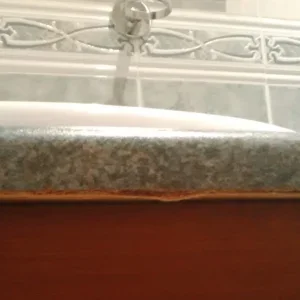
The past two years have presented a turbulent time in the wood industries – both incredible periods of demand, but also increasing costs, supply chain issues and more recently, falling demand for many wood products in some global regions.
In Villa Cortese near Milan, leading global supplier of sanding technology Imeas, which serves the primary wood-based panel manufacturing and metal working industries, has watched all the market trends and its challenges during the period.
Imeas sales director Francesco Zenere said to WBPI that while agreeing that many end-user wood product markets were seeing a drop in demand, the pipeline for investment projects has been good, demonstrating that machinery investment is on a mid- to long-term timetable and does not exactly correlate with the short-term market movements.
Currently, wood-related business makes up 55% of Imeas’ total business, while the metal industries accounts for 39% and the remaining small segment is rubber/ composites.
Within the wood business, the MDF and particleboard industries makes up 64% of turnover, cross-laminated timber 21% and plywood 8%, with the remaining 7% going into other product segments such as HPL and glulam.
By world region, nearly half of business is conducted in Europe (48%), North America accounts for 15%, with the rest being as follows – South America (11%), Asia (8%), India (9%) and others (9%).
“We are in the same situation as last year in terms of the number of offers [for our products],” said Mr Zenere. “We have probably had a little bit of improvement.
“The market is moving quite a lot, there are still a lot of projects developing, with most of them located in Europe, North America and South America. These regions account for 70% of the offers that were made just for the wood business.
“The business is either going direct to customers or via main contractors like Dieffenbacher for example. In the case of cross-laminated timber (CLT), we have developed direct sales to end-users as well as strong partnership with main contractors.
“North America is interesting [for business] at the moment, but what is largely missing is Asia, India and the Pacific area, which altogether accounts for 25%.
“We deal worldwide, so when one market is reducing then another one is taking over – there are different cycles moving at the same time. China was absorbing 40-50% of our production but nowadays it is only about 10% of our sales and the other 40% has moved to other countries. We can cover most of next year with orders already and there are some orders for 2024.
“Customers are moving quite far ahead of the time. All these plants take years to be developed so if you do not move now it will be too late when the market recovers in two to three years. You cannot stop-start like picking up a car from a dealer.”
SUPPLY CHAIN DISRUPTION
The Covid zero tolerance policy in China is affecting industries quite a lot and impacts delivery time and availability of components because Chinese suppliers have sometimes had to reduce production. CPUs, HMI screens, inverters and sometimes even the humble contactors, typical items used by woodworking technology producers, are affected by this.
“Usually in the past delivery time for these items use to be two to three months but now it has moved to 12 or 16, and sometimes 24 months – making ridiculous delivery times. A good share of the items needed for making machines are now in this situation.
“We have to pay more to get this material than in the past and we have to find different suppliers with different price policies because there is a long chain between the supplier and the distributor.”
While the price increases have averaged 25-30% over the past 18 months, sometimes the weekly price fluctuation of certain raw materials can be +/- 40-50%.
The cost of energy is also a factor for everyone – several stainless steel industry customers of Imeas have confirmed that the furniture industry has contracted since June.
“They had a big demand in the first phase of Covid because people were staying home. Now the situation is the opposite, with plants operating less than in the past due to the fear of the energy cost. People are focusing on paying their bills for heating the house rather than investing in improvements for the house.”
“Energy cost is going to increase our production costs,” added Mr Zenere. “From September one year ago until now the price is two-and-a-half times higher for the same level of energy consumption.”
Imeas’ solar panels on the roof means it can mitigate part of this increase by being able to sell solar energy back to the electricity grid.
On the steel front, the shock of the war in Ukraine has obviously impacted global supply of steel coming from Russia and Ukraine to Italy for reprocessing. Availability and high prices were a problem earlier this year but alternative sources have moved in to fill the gap.
Mr Zenere quoted Italian statistical data suggesting the wide swings in steel prices will probably stabilise and may drop next year.
PROJECTS
In Europe, Imeas is currently mostly working in the plywood and CLT sectors.
CLT is by far the fastest growing segment for the company and it has sold 40 machines in Europe, North America, South America and Australia.
Schilliger Holz AG has returned to buy a second top and bottom sanding machine, this time for its CLT factory in France. Imeas’ CLT machines are also being supplied for the first time to Spain and Portugal.
The 40th top and bottom sander for the CLT market is being supplied to Australia. The company has also received an order for two HPL grinding machines from India for HPL production – these units are the first ones to be delivered since product development and are designed to be high performance but more affordable for the Indian market.
In the wood-based panels sector, Imeas has sold a machine for an OSB plant in the US, to be delivered in 2024.
A supply deal has also been closed with Cotapaxi in Ecuador, as part of a new particleboard project the producer is planning, with supply expected in H1 2024 and expectations of a first panel produced in the same year.
One product development by Imeas, which WBPI showcased last year, is the four-sided sander, which has the capability of sanding every face of large glulam beams and CLT panels.
The first two machines have been delivered – one to Canada and one in the US. They offer a wider range of capacity, able to process beams up to 700mm thick and also up to 2.6m wide panels.
“We have started marketing this machinery,” added Mr Zenere. “Up to now it is a small part of our business but we see some potential growth in the next years.” More integration with software is also a continuing focus at Imeas.
“This trend is continuously growing with our customers so the machine can operate almost autonomously with minimal supervision from operators. A lot of statistical and production data is fed back to the factory to help production efficiency and product advancement.”
The company has also developed a new generation of cross-belt sanders, mainly for CLT and MDF, with the machine design improved to make it more simple but also more efficient.
The belt control system has also been renewed with two different options now – this was needed due to component scarcity to offer more flexibility in the supply to customers.
So, overall, progress continues at Imeas with good order levels and opportunities across its stable of technologies in different world regions.






